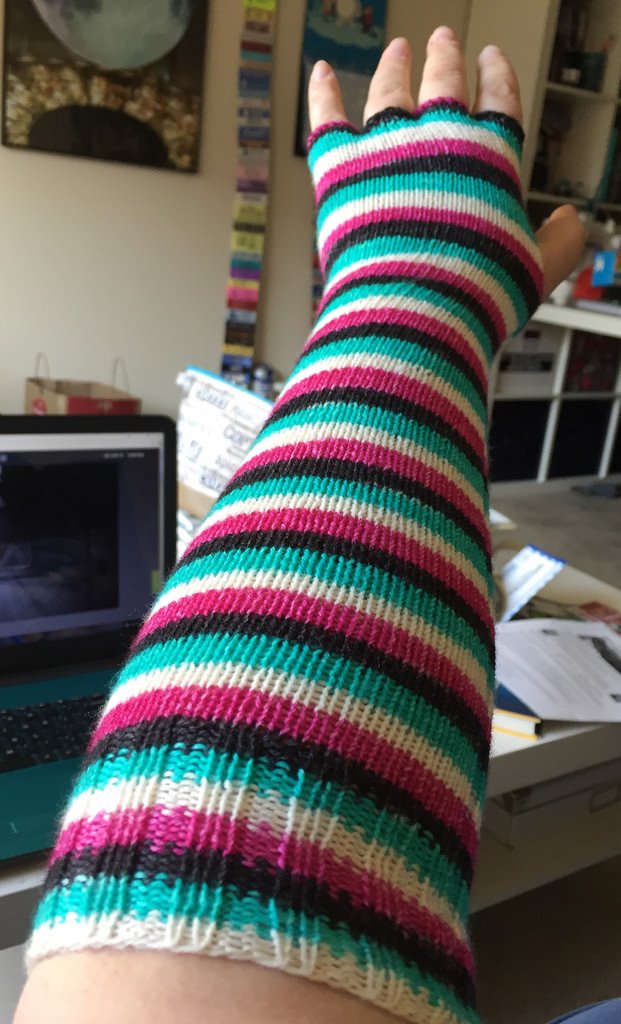Knitting: Show Your Stripes Gloves
You know those super nice skeins of self-striping fingering weight yarn? The ones that are really only good for socks, but you already have So. Many. Socks? Here’s another option for you.
Materials
about 400 yards of fingering weight yarn - yes, break into that fancy skein you were saving for “something special”
US 1 / 2.25mm needles (DPNs or circulars, depending on your preferred method of knitting in the round)
Tapestry needle for weaving in ends
Instructions
Cast on 64 stitches. Place your marker, join in the round (and don't twist anything that shouldn't be twisted).
Work in 2x2 rib for about 30 rounds.
Work stockinette on 32 stitches and continue the 2x2 rib on the other 32 stitches until the tube reaches from your elbow to the base of your thumb (or however long you want your gloves to be). Try on the glove if it’s for you! Stretching the fabric horizontally can take away from your vertical length a bit. I usually end up with 160 rounds total.
Work flat for 14 rows to create your thumb opening, making sure the stockinette half of your tube will end up on top of your hand. You may have to knit 32 stitches across your tube to make sure you end up with a left glove and a right glove.
Re-join in the round and work in pattern to the base of your fingers. It can help to cross the first and last stitch of your round like a very small cable when you join, to tighten that spot up a little bit.
Finger Options
Work at least 10 rows in 2x2 rib for one fingerless glove option. It helps to decrease about 4 stitches on your first round of ribbing.
Decrease 4 stitches across your next round, then work size L of the Phalangees pattern from Knitty, Deep Fall 2012. This is my favorite option for a well-fitting fingerless glove I can type in.
Use your favorite glove pattern to knit actual fingers for your new stripy gloves.

